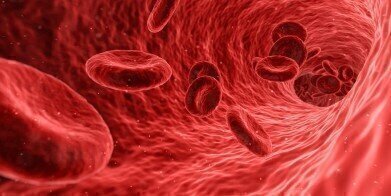News & views
What Are the Symptoms of Vascular Disease?
Dec 03 2021
Vascular disease is an ailment which affects the arteries, veins and blood vessels of the human body. These carry blood and oxygen around the body to and from various important organs, including the brain, the heart and the lungs. As a result, it’s imperative that your arteries, veins and blood vessels remain in functioning order at all times. Failure of any of them can result in vascular disease.
While the disease is concerning enough in isolation, it often leads to far greater health complications. These can manifest themselves in the shape of coronary heart disease, strokes and various types of aneurysm. As such, early diagnosis of vascular disease is paramount to successfully treating it and ensuring a full recovery in the patient.
What causes vascular disease?
There are many different causes of vascular disease, including trauma, compression or occlusion on the artery or vein in question, as well as tumours and malformations which upsets its function. Blood clots can also block the flow of blood, while inflammation can narrow the vessels and make it harder for blood to pass through them. Genetics may also play a role.
However, the biggest cause of vascular disease is something called atherosclerosis. This occurs when fatty substances are allowed to build up inside the vessel and restrict the flow of blood. While our knowledge of this phenomenon remains lacking, it’s thought to be brought on by lifestyle factors, such as obesity, poor diet, smoking and inactivity, as well as high cholesterol levels and diabetes.
What are the symptoms of vascular disease?
Tell-tale signs of vascular disease include pain in the affected area, discolouration of the fingertips and toes, pain in the hands and feet when subjected to cold temperatures, coldness, tingling or numb feelings in the extremities, abnormal swelling or wounds and ulcers which will not heal. Anyone experiencing any of these symptoms is advised to seek guidance from their GP.
As mentioned above, vascular disease can merely be the precursor to a wide number of other ailments, many of which are deadly. The most serious of these is coronary heart disease, which is responsible for 16% of all deaths worldwide and remains the world’s biggest killer. Symptoms of this include angina, tightness in the breastbone and pain spreading out across the torso.
How is vascular disease diagnosed?
Traditional techniques used to diagnose vascular disease include X-rays, arteriographies and magnetic resonance angiographies. However, the last 18 months have witnessed some promising breakthroughs in modern technology. The coronavirus pandemic has proven to be a catalyst for the diagnosis of many ailments and vascular disease is no different.
One development which appears to be particularly promising is the advent of novel 3D modelling tools to boost vascular disease research. By using ‘arterial wall-on-a-chip’ technology, the scientists behind the research are able to replicate the physiology of the arteries in the human body in silico. This allows them to gain greater understanding into how the body performs under the strain of vascular disease, potentially providing informed insight into how it can be diagnosed and treated more successfully.
Digital Edition
Lab Asia 31.6 Dec 2024
December 2024
Chromatography Articles - Sustainable chromatography: Embracing software for greener methods Mass Spectrometry & Spectroscopy Articles - Solving industry challenges for phosphorus containi...
View all digital editions
Events
Jan 22 2025 Tokyo, Japan
Jan 22 2025 Birmingham, UK
Jan 25 2025 San Diego, CA, USA
Jan 27 2025 Dubai, UAE
Jan 29 2025 Tokyo, Japan



















